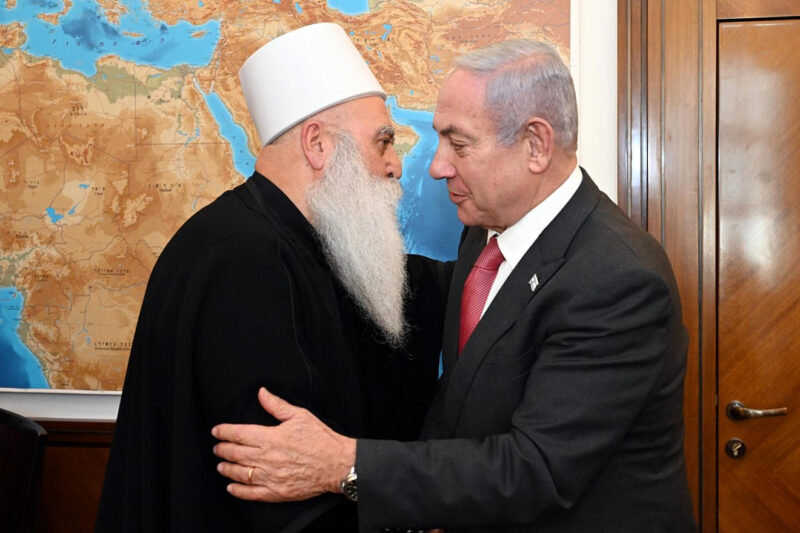ARTICLE AD BOX
Jewish history is full of intriguing men, many lost to time, with little record of them ever existing. One of these mysterious men, Moses Guibbory (1899-1985), a self-proclaimed Jewish messiah, left behind an absurd and intriguing massive 2000-page volume, published in 1943, titled The Bible in the Hands of Its Creators, of which I got in a copy recently.
 Guibbory was born in Ukraine in 1899. Living a nomadic lifestyle in Europe from a young age, during WWI he lived in Turkey, and later traveled to Eretz Yisrael. He settled in a cave, part of the complex known as the Tombs of the Sanhedrin in Northern Jerusalem, living as a hermit. Within a few years, Guibbory had declared himself the messiah and a prophet, after correctly predicting a coming earthquake. As with many false messiahs, it was his disciples that propagated his word, with Guibbory himself continuing to live as a hermit. David Horowitz, at the time a young Zionist pioneer, after a mystical chance encounter with Guibbory, became Guibbory’s most effective disciple. Horowitz married a woman named Paula, who arrived as a tourist from Poland, leading Guibbory to send Horowitz on a mission to Poland to warn European Jewry of an impending disaster, and to encourage them to immigrate to the holy land before time ran out.
Guibbory was born in Ukraine in 1899. Living a nomadic lifestyle in Europe from a young age, during WWI he lived in Turkey, and later traveled to Eretz Yisrael. He settled in a cave, part of the complex known as the Tombs of the Sanhedrin in Northern Jerusalem, living as a hermit. Within a few years, Guibbory had declared himself the messiah and a prophet, after correctly predicting a coming earthquake. As with many false messiahs, it was his disciples that propagated his word, with Guibbory himself continuing to live as a hermit. David Horowitz, at the time a young Zionist pioneer, after a mystical chance encounter with Guibbory, became Guibbory’s most effective disciple. Horowitz married a woman named Paula, who arrived as a tourist from Poland, leading Guibbory to send Horowitz on a mission to Poland to warn European Jewry of an impending disaster, and to encourage them to immigrate to the holy land before time ran out.
Horowitz writes of his visit to Hillel Zeitlin (1871–1942), a leading Jewish thinker, known as a founder of the neo-chasidic movement:
Few knew that Hillel Zeitlin, the mystic and publicist in major Jewish newspapers, such as The Warsaw Moment, stands in prayer every day until close to noon. He would visit the synagogue only occasionally. His prayers were said in his home. I immediately began to tell [Hillel Zeitlin] about the Sanhedrin Cave-dweller. No sooner had I begun my story did he interrupt to say that he had heard about him through newspaper accounts, and that he had greatly wondered about him.
“Please tell me everything you saw and experienced there in the Cave,” he asked most anxiously. “Try to remember every word he spoke to you and repeat it to me. This episode interests me more than words can express,” said Zeitlin seriously. I was tremendously pleased. Up to now very few had been interested in my cave experiences. Now here was a scholar, a famed writer well recognized in the Hebraic world, who was most anxious to hear the whole story. As we sat there over the large table, I enthusiastically related my story. Then he rose and went to fetch an old volume from his large library. It was a kabbalistic work. He opened it to a certain page and pointed out a passage written in Aramaic. “There it is,” he said. “Kabbalistically, it is written in this ancient volume that a man by the name of Moshe would appear at this particular time in a Jerusalem cave.” I was noticeably moved.
Meanwhile, another figure became very influential in promoting Guibbory – Boake Carter, a British-American broadcast news commentator in the 1930s and early 1940s and one of the most successful radio broadcasters of the era. Carter became a committed disciple, devoting much funding and time to the printing of The Bible in the Hands of Its Creators and supporting Guibbory. Much of the work of the Guibbory disciples happened in the estate of Carter in Long, Island, N.Y.
Alas, Guibbory’s movement ended in disaster. Guibbory, convinced of his supreme powers and occasionally referring to himself as G-d, became more demanding and insane as time went on. Horowitz broke off with Guibbory shortly after the publication, with Horowitz going on to lead a successful career as a journalist in the United Nations and is credited with convincing several Central-American countries to vote in favor of Israel’s creation at the United Nations. Carter died under mysterious circumstances in 1944 and despite living for many decades after the book’s publication, Guibbory very fast faded in to obscurity.
The book itself is described by its author as “the final revelation of G-d in which all answers to all remaining questions with respect to the Tanach were answered.” The book makes for some heavy reading, and uses a style later to be popularized as the “Bible Codes.” The book, though, did not achieve the intended result, nor did Guibbory achieve the recognition he thought he would receive as the final “prophet like Moses.”

 3 months ago
215
3 months ago
215








 English (US) ·
English (US) ·